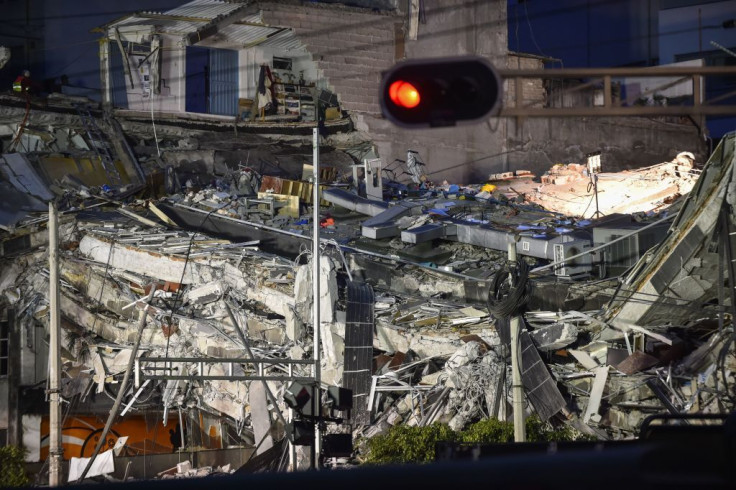
Seismologist and professor of Earth Sciences at the University of Southern California, and director of the Southern California Earthquake Center, John Vidale, gave his opinion on why Mexico City is so vulnerable to earthquakes. According to Vidale via CNN, the greatest impact of Tuesday’s 7.1 earthquake was in Mexico City, but the shaking was even more intense in Puebla, closer to the epicenter.
"The shaking energy was generated at the earthquake's source, 30 miles deep, for just 20 seconds, but the waves reverberated for much longer, up to a minute or two, in the mountain and valleys," explained the professor. "Tuesday's earthquake was caused by crumpling arising from the downward bending of the sinking Cocos Plate, rather than directly by slippage between plates," he added.
He also mentioned the 8.1-earthquake that struck two weeks ago, also from the crumpling of the Cocos Plate. "It struck Mexico 400 miles to the southeast and offshore, not far from Guatemala, and killed dozens of people. It is not immediately clear whether Tuesday's earthquake was triggered by the earlier one or if it is unrelated -- usually aftershocks are not so distant in time," Vidale said.
In the history of Mexican earthquakes, Tuesday's was coincidentally the 32nd anniversary of the 1985 Michoacan earthquake, which resulted in thousands of deaths. The 1985 earthquake was the more typical great earthquake that breaks the boundary between the plates, and caused great devastation in Mexico City despite being more than 100 miles distant.
Mexico City's downtown area is notoriously vulnerable to earthquakes because of the very soft and wet ground underneath. Its soil amplifies shaking like Jell-O on a plate, and is prone to liquefaction, which is the ability to transform dirt into a dense liquid when sufficiently churned. In the 1985 earthquake, many large buildings were destroyed, and Tuesday's quake was another blow mostly to the older, less solidly constructed structures.
The cure for earthquake devastation is well known -- fix the old buildings and improve construction methods -- and too complex and expensive to accomplish in less than decades. Mexico has been learning how to deal with this problem the hard way. Its entire Pacific coast is a large and fast moving (that is, moving as fast as fingernails grow-- speedy in plate tectonics terms) plate boundary, often suffering large and great earthquakes.
There have been 34 earthquakes bigger than magnitude-7 within 300 miles of Tuesday's quake since 1900. Tuesday's toll indicates there is yet more work to do.
Fortunately, Mexico has constructed an "earthquake early warning" system to blunt the tragedy. The system notices shaking very near the epicenter, and sends the news of impending chaos ahead of the shaking. At least some people and some fragile facilities have a little time to communicate and prepare.
Initial reports are that the system worked Tuesday. Ironically, the US does not yet have such a system, but is trying to build one. If the government continues to deem it worthwhile, the United States will also have an early warning system in a few years.
The opinions expressed in this commentary are solely those of John Vidale.
© 2025 Latin Times. All rights reserved. Do not reproduce without permission.






